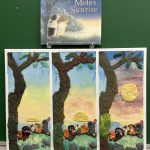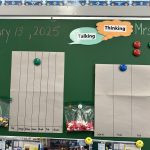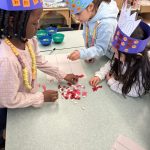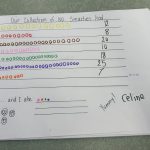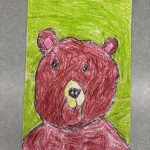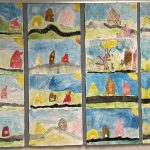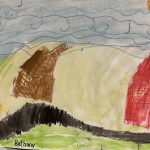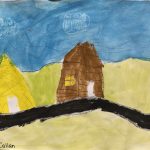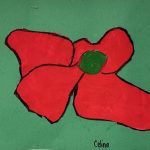For our Art piece we were inspired by the book “Mole’s Sunrise”, by Jeanne Willis. In this story Mole goes to see his very first sunrise with his friends Vole, Squirrel, Sparrow, and Rabbit. Their vivid descriptions bring forth a clear picture for Mole. In the end we learn that Mole is blind and has witnessed this sunrise in his mind. We had a very thoughtful discussion about the book.
We took an 18” x 24” canvas and divided it into three panels with artist’s tape. We used acrylic paints (which one group mixed and blended) to paint the background areas on the three panels. While this was happening the other group took various colours of modelling clay and created the colours needed for the trees, branches, leaves, rocks, and the suns.
Painting happened first.
The next day the modelling clay crew took over in stages and attached the modelling clay to the canvas to create their objects.
Five students created three of the same animals.
It all came together this afternoon. We then took off the border tapes.
The student are very pleased with their finished work. It is heading off to the Burnaby Art Gallery on Thursday.
The Opening Night of the exhibition will be on Thursday, May 1st. All the participating school’s art pieces will be on display there until June 1.




